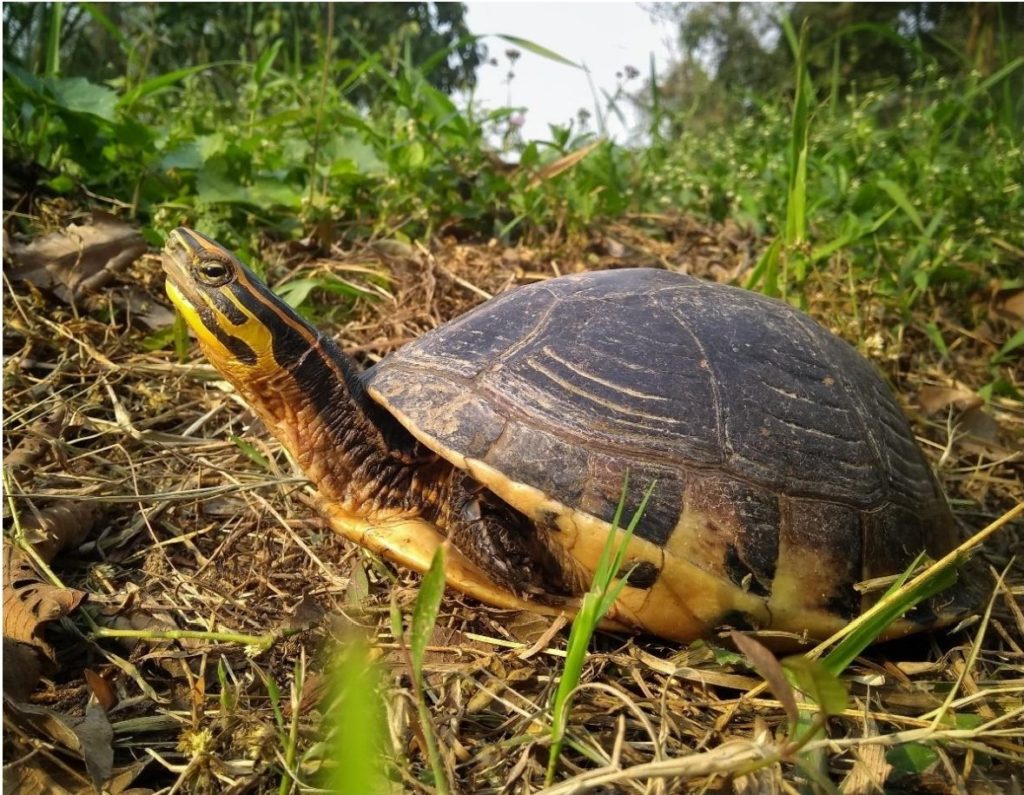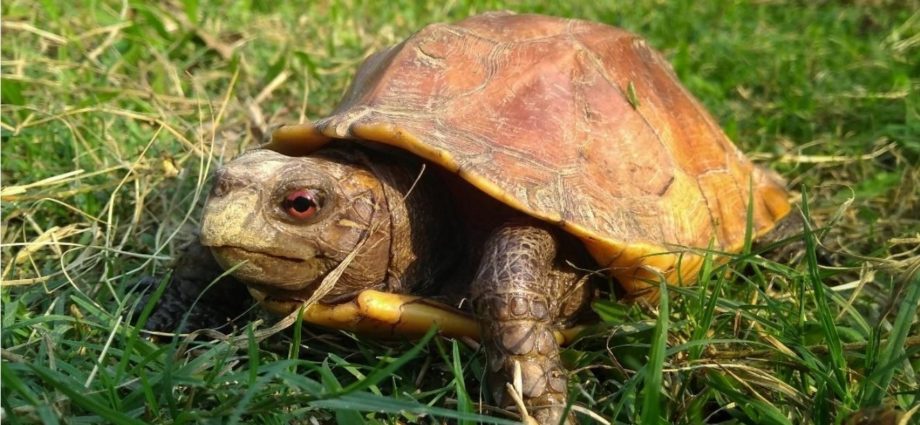Turtles are considered as the most threatened vertebrate group on our planet. A revised list of threatened species was published by IUCN in 2021. And 7 species of turtles was added to the Endangered category and 4 turtles in the Critically Endangered category in the context of Northeast India. This article is about Cuora, commonly called the Box of Forests.
A threatened Genus of freshwater turtle called the Cuora or the Box turtles finds in home in this region. The name comes from the intriguing ability to close their shells completely. Two species of this genus exist in India, namely the Malayan box turtle and the Keeled box turtle. Both are considered Endangered but do not have protection under the Indian Wildlife (Protection) Act of 1972. Small populations of these turtles are found widely across Asia including the Northeastern states. A small region in the Andaman and Nicobar Islands and parts of Northeast India can be instrumental for the survival of C. amboinensis. But proper research has not been undertaken to estimate the population for both the species.
The ecstatic jagged shell creature or Keeled box turtle species of Cuora is often identifiable from its three prominent keels on the carapace augmented by a brick red hue. These turtles are semi aquatic but predominantly terrestrial. The inhabit in tropical moist evergreen forest floors with low undergrowth and dense litter. Also occasionally found in low lying swamps or in between rocky crevices around foothills. The Malayan box turtle species of Cuora however has a beautifully arched blackish carapace with three distinct orange-yellow bands on its head. They thrive in analogous habitat conditions with differing preferences. They strongly restrict to wetlands or lentic ecosystems, creeks and sometimes wandering around moist forest floors. The duo share a similar taste in omnivorous diet.

The Cuora or box of the forests have a great significance in repopulating forests via seed dispersal. They also act as an ecological indicator. These partially aquatic turtles also play a great role in maintaining the health of wetlands by scavenging and cleaning up of forest floors. They are facing extinction due to over exploitation of forest areas for food. This causes damages in terms of both food and habitation. They are also kept as pets and part of Chinese medicine, thus traded illegally in local and international markets.
C. mouhotii is a primary forest specialist which makes them extremely vulnerable to habitat degradation by small-scale agriculture and land use vagaries. Their natural habitats have declined by 50–80% during the past three generations, qualifying them to be an Endangered species. But habitat impacts on C. amboinensis are comparatively less.
The writeup about Cuora or the Box of the Forests was written by Sushmita Kar. She is a wildlife researcher and conservationist currently working with the Turtle Survival Alliance.
To publish your articles in Discover East, mail them to discovereastin@gmail.com.

